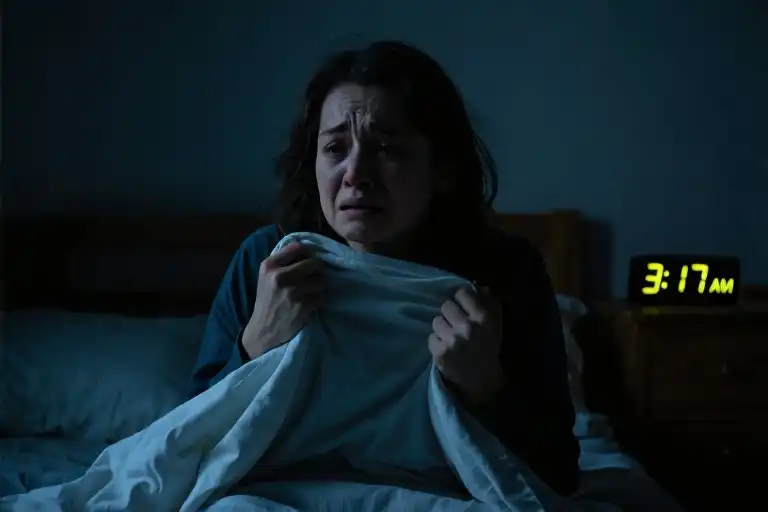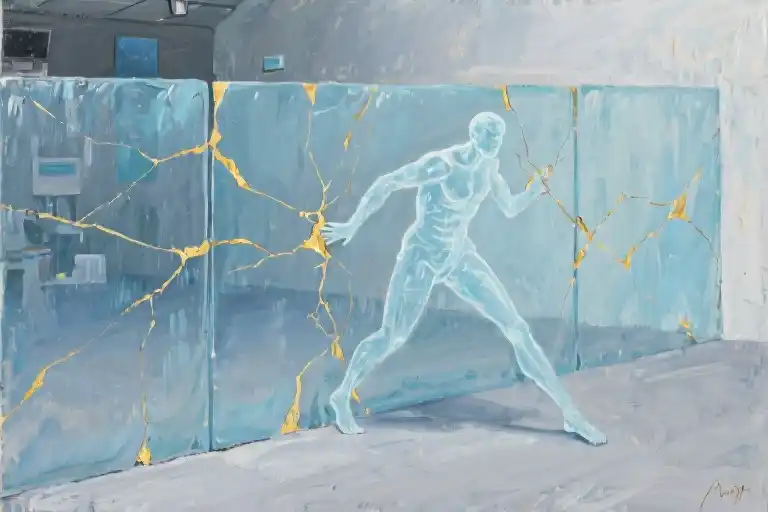“Love shouldn’t cut, love shouldn’t sting / But you taught me how to burn everything.” These lines from an unnamed poet capture the paradoxical nature of toxic relationships – how the very hands that promised to hold us become the ones that leave scars. For those who’ve loved deeply only to find emptiness, who’ve traced their worth in someone else’s conditional approval, this is where we begin.
Modern psychology confirms what poets have always known: the most damaging relationships aren’t those devoid of love, but those where affection and harm coexist. The flowers left at your doorstep after nights of whispered cruelties. The future plans drawn like blueprints over your trembling hands, even as your voice grows smaller. This is the terrain we’ll explore – not as observers, but as fellow travelers who’ve saved mementos of our own wreckage.
Healing from toxic relationships rarely follows linear paths. Like the poem’s imagery of “paper boats in a storm,” recovery often feels fragile and directionless. Some days you’re dancing in newfound light; others, you’re folding old letters with shaking hands. That’s why we’ll examine:
- The anatomy of emotional manipulation (those “knives” fashioned from your whispered fears)
- The physics of trauma bonds – why we miss what harmed us
- Non-linear healing through creative expression (your pain as mosaic art)
- Making peace with ghosts that refuse to leave
This isn’t about tidy resolutions. Like the poet admits: “Some things don’t heal, some ghosts still stay.” But perhaps within those unhealed spaces, we find our most authentic voices – the ones that finally say, “I’ll be long gone” while dancing toward light.
For anyone tracing their future in smeared notebook lines, know this: your fragmented story matters. The love that felt like breathing and the house that became a fire – these contradictions don’t make you broken. They make you human. And in these pages, your unheard voice finds company.
When Love Becomes a House on Fire: Recognizing the Sweet Poison of Toxic Relationships
There’s a particular kind of pain that comes wrapped in roses. The kind where ‘I love you’ appears like morning dew on your windowpane, beautiful but evaporating before anyone else can witness it. This is the paradox of toxic relationships – they often begin with flowers at your doorstep, only to leave you drowning in empty echoes of what once felt like love.
The Bait: Sweetness as Control Mechanism
Toxic relationships rarely announce themselves with warning signs. Instead, they mirror the poetic imagery of “kisses in the rain” and handwritten promises that feel achingly genuine. Research in emotional abuse patterns shows this ‘love-bombing’ phase serves a dangerous purpose: it creates neurological pathways associating your partner with dopamine hits, making subsequent mistreatment more psychologically confusing.
Consider these red flags disguised as romance:
- Overwhelming early intensity: Relationships that feel “too perfect” too quickly
- Conditional affection: Love expressed only in private or when you comply
- Future faking: Blueprint promises (“Tell me where you’re going”) without present accountability
From Paper Boats to Knives: The Gradual Erosion
The transition from cherished to controlled often happens in microscopic increments. One day you’re tracing your future in notebook lines full of hope; the next, you realize someone has been smearing the ink before your dreams could dry. This is the emotional manipulation captured in verses like “you turned my fears into knives” – the systematic weaponization of vulnerabilities.
Psychological studies identify these manipulation tactics:
- Scar tracing: Feigned interest in your pain points (“your scars are beautiful”)
- Reality distortion: Making you question your perceptions (“should’ve locked the door”)
- Isolation: Creating dependence (“no lighthouse, no north star”)
The Paper Boat Phenomenon: Losing Yourself in the Storm
Perhaps the most devastating effect emerges in the “paper boats in a storm” metaphor – that fragile, directionless state where your identity begins dissolving. Trauma bonding creates a cruel paradox: the more unstable the relationship, the harder your brain works to “fix” it, like desperately folding new origami vessels knowing they’ll sink.
Signs you’ve entered this phase:
- Future uncertainty: “What if I never breathe that ease?”
- Self-betrayal: “I swore I’d try to want it” (suppressing your truth)
- Emotional whiplash: Cycling between hope (“flowers”) and despair (“hollow space”)
Breaking the Spell: First Steps Toward Clarity
Recognizing these patterns is emotional archaeology – brushing away layers of justification to reveal the structural cracks beneath. If these words resonate, consider:
- Document the disconnect: Compare their “windowpane promises” to consistent actions
- Reclaim your metaphors: Are you really a paper boat, or have you been a lighthouse all along?
- Seem confirmation: Toxic relationships thrive on isolation; share your concerns with trusted friends
Like the poem’s narrator who eventually dances “in the light I finally found,” your journey begins with this crucial realization: love shouldn’t require you to burn everything that makes you, you. The house on fire isn’t your home – it’s the relationship itself. And you? You’re the one who gets to walk out of the flames.
The Abyss of Contradictions: When Love and Hate Share the Same Bed
Trauma Bonds: The Science Behind Why We Stay
The human heart operates on a peculiar paradox – the same hands that inflict our deepest wounds often become the ones we desperately clutch for comfort. This psychological phenomenon, known as trauma bonding, explains why victims of toxic relationships frequently oscillate between resentment and longing. Neurochemically, the intermittent reinforcement of affection following abuse creates addiction-like responses in the brain. Dopamine surges during rare moments of kindness become neurological rewards that override rational judgment, leaving us stranded in emotional limbo where love and hate are just the same.
Memory’s Double-Edged Nature
Our recollections exist as fragmented vignettes – tender moments preserved like fireflies in amber alongside shards of pain. Consider these contrasting scenes from anonymous reader submissions:
“He brought me tulips every Tuesday but canceled our anniversary dinner to console his ex.”
“She memorized my coffee order yet weaponized my childhood trauma during arguments.”
These contradictions mirror the poetic imagery of flowers at my doorstep existing alongside empty echoes. The brain’s tendency to compartmentalize creates mental albums where kisses in the rain and whispered fears into knives occupy adjacent pages. This explains the visceral pull of nostalgia even when rationally recognizing harm.
Living Testimonies: Reader Voices
Marina, 28: “I keep his last voicemail like a grenade with the pin half-pulled. Some days I play it to remember his laugh, other days to remind myself why I left.”
James, 23: “After she moved out, I found a sweater she forgot. For weeks I alternated between sleeping in it and trying to burn it.”
These accounts validate the universal struggle captured in the lines “I don’t know if I miss you or hate your name”. The emotional whiplash isn’t weakness – it’s evidence of our capacity to hold multitudes.
Navigating the Paradox
- Name the Contradiction: Journal exercises using prompts like “What I miss about us:” vs “What I never want to relive:” create tangible separation between nostalgia and reality.
- Recontextualize Memories: That romantic beach vacation? Also where they threatened to leave you stranded. Both truths coexist.
- Establish Temporal Boundaries: Permit morning grief but institute afternoon no-contact rules. Gradual compartmentalization builds emotional muscle.
As the poem acknowledges with brutal clarity: “Some things don’t heal, some ghosts still stay.” Healing isn’t about erasing these contradictions, but learning to let love and hate occupy separate rooms in your psyche until one eventually stops paying rent.
The Awakening Fragments: From Paper Boats to Lighthouses
There comes a moment in every storm when the waves stop feeling like punishment and start feeling like motion. That’s when you realize the paper boats weren’t signs of weakness—they were your first attempts at navigation. This chapter isn’t about sudden epiphanies or magical cures; it’s about collecting those fragmented moments of clarity and building your own compass.
The Three-Phase Reconstruction Model
1. The Acknowledgment Phase (Paper Boats)
This is where most healing gets stuck. We either deny our pain (It wasn’t that bad) or drown in it (I’ll never recover). Try this instead:
- Morning Pages for the Brokenhearted: Every morning, write three raw sentences:
1) Today I acknowledge _ hurt me 2) This pain makes me feel
3) One small thing I deserve today is _
2. The Boundary Phase (Storm Navigation)
Notice how the poem shifts from you traced my scars to you lost me between hello and goodbye? That’s boundary-setting in action. Create your Emotional Coast Guard rules:
- If a memory feels like knives (whispered fears into knives), visualize wrapping it in thick rope and lowering it into the ocean
- When missing someone toxic, say aloud: This longing is just my mind trying to resolve cognitive dissonance (yes, use the clinical term—it creates psychological distance)
3. The Reconstruction Phase (Lighthouse Building)
Dancing in the light I finally found doesn’t happen overnight. Try these scaffolding exercises:
- Metaphor Mapping: Replace painful memories with empowering symbols. That house on fire? Redraw it as a phoenix rising from ash
- Future Archaeology: Bury a letter to your future self describing what breathing that ease (from the poem) would feel like physically (cool air? lavender scent?)
Transformative Writing Exercises
Fragment Writing (10-minute exercise)
- Choose one line from the poem that resonates (the ink always smears before it’s defined)
- Write it vertically down a page
- For each letter, create a new line:
T – The trembling in my hands when…
H – How many versions of myself…
E – Every erased draft still…
Pain-to-Power Word Alchemy
Create a conversion chart:
| Old Pain Word | New Power Word |
|---|---|
| Broken | Mosaic |
| Ghost | Ancestor |
Creative Energy Conversion
The poem’s blueprint on my hands imagery reveals a profound truth: your deepest wounds contain the map to your most authentic art. Try these conversions:
- Anger → Kinetic Energy
- Crumple pages with hurtful quotes, then sculpt them into abstract art
- Set a timer to write furious sentences, then blackout everything except 3 poetic words
- Longing → Sensory Writing
- Describe what you miss using only textures (the crumpled cotton of your goodbye)
- Rewrite memories swapping senses (what did the betrayal taste like?)
- Confusion → Found Poetry
- Cut words from old texts/letters and rearrange into new truths
- Use newspaper horoscopes as writing prompts (\u0022Today’s cosmic weather suggests…)
The Lighthouse Keeper’s Journal
Maintain a progress tracker with these non-linear metrics:
- Nights I cried less than last week (not days without tears)
- Times I recognized my paper boats as bravery
- Moments light felt more real than ghosts
Remember: Healing isn’t about destroying the storm—it’s about learning to read the waves. Your fragments aren’t failures; they’re the glittering pieces that will eventually catch the light just right.
The Permanence of Scars: Learning to Live with Ghosts
We’ve been told our entire lives that time heals all wounds. That one day, we’ll wake up and the pain will be gone, the memories faded, the scars invisible. But what if that isn’t true? What if some things don’t heal, some ghosts still stay – just like the poem says?
This isn’t a failure of healing. This is the reality of being human. The people who’ve marked our souls don’t simply disappear when we decide to move on. Their fingerprints remain on our ribcages, their echoes in our favorite songs, their shadows in certain turns of phrase. And that’s okay.
The Myth of “Moving On”
The wellness industry would have us believe that complete recovery looks like erasing all evidence of past pain. But true healing isn’t about deletion – it’s about integration. Those scars? They’re proof you loved deeply enough to be marked by it. Those ghosts? They’re reminders of the depth of your capacity to feel.
Consider how the poem handles this:
“I keep your ghost like an old regret / Like a letter I wrote but never sent”
There’s no violent exorcism here, no dramatic burning of mementos. Just the quiet acknowledgment that some presences never fully leave us – and perhaps they shouldn’t.
The Alchemy of Pain
When we stop fighting against the permanence of certain wounds, we discover their surprising gifts:
- Depth in Art: The most piercing creative work comes from those who’ve transformed their scars into art. Think of Frida Kahlo turning physical pain into surreal masterpieces, or Leonard Cohen finding holiness in brokenness.
- Radical Empathy: Having survived certain hurts makes us fluent in the unspoken pains of others. That coworker’s flinch at raised voices, that friend’s hesitation around certain topics – you notice what others miss.
- Fierce Boundaries: Scars make excellent warning systems. They tingle when similar dangers approach, helping you protect your present self with wisdom earned in past battles.
A New Relationship with Ghosts
Instead of trying to banish what won’t leave, try these reframes:
- Ghosts as Guides: That twinge when you hear “their” song? It’s not just pain – it’s a reminder of how far you’ve come.
- Scars as Maps: Each one tells part of your survival story. Together, they chart the territory you’ve crossed to become who you are.
- Memories as Footnotes: They don’t have to dominate the text of your current life, but acknowledging their presence keeps the narrative honest.
The poem concludes with this devastating truth:
“Some things don’t heal, some ghosts still stay / And scars don’t fade just ’cause you want them erased”
There’s profound freedom in releasing the pressure to “get over it completely.” Some loves change us permanently. Some losses reshape our emotional DNA. The goal isn’t to return to who you were before them, but to honor how they’ve become part of your story.
Practical Integration
Try these exercises to make peace with permanent marks:
- Scar Mapping: Literally or metaphorically trace your scars (emotional or physical) and write one sentence about what each taught you.
- Ghost Conversations: Write a letter to someone who still haunts you, then write their imagined response from your current wisdom.
- Pain Palette: Create art using colors that represent different pains, blending them into something new.
Remember – the healthiest trees are often the ones with visible rings marking droughts survived. Your scars are like those rings: evidence of seasons endured, growth achieved, life continuing despite everything. They’re not flaws in your healing. They’re the signature of your survival.
The Ghosts That Stay: Writing Our Unfinished Stories
The ink has dried on our last page, but the words still whisper in the margins. That’s the thing about emotional scars—they don’t disappear when the wound closes. Like the poem says: “Some things don’t heal, some ghosts still stay.” And perhaps that’s okay.
The Weight of What Remains
We spend so much energy running from our ghosts—those lingering traces of relationships that shaped us. The scent of their cologne in a crowded street. The way rain sounds against windows at 2 AM. The unfinished conversations we still have in shower stalls. These aren’t failures of healing; they’re proof we loved deeply enough for it to leave permanent marks.
Research from the Journal of Traumatic Stress confirms what poetry has always known: emotional pain physically alters neural pathways. Our bodies remember what our minds try to forget. That ache when you hear that song? It’s not weakness—it’s your cellular history speaking.
Dancing With Ghosts
Frida Kahlo didn’t paint over her scars; she adorned them with flowers. Leonard Cohen sang, “There’s a crack in everything—that’s how the light gets in.” These artists understood what modern healing culture often forgets:
- Integration beats eradication
Stop fighting the ghosts. What if we stopped seeing them as intruders and started recognizing them as former selves who still need acknowledgment? - Scars become compasses
Every healed wound teaches discernment. That visceral recoil when someone says “trust me” too quickly? That’s wisdom wearing the face of pain. - Unfinished stories have value
Japanese kintsugi repairs broken pottery with gold lacquer, making fractures more beautiful than the original surface. Our emotional kintsugi happens when we:
- Write letters we’ll never send
- Create art from old wounds
- Recognize patterns without shame
Your Turn to Hold the Pen
This isn’t where your story ends—it’s where you become the author of what the pain means. So I’ll ask you the question my therapist once asked me:
“What if your ghosts aren’t haunting you, but waiting to be heard?”
Leave space below these final lines. Not every story needs closure to be complete. Some poems are more powerful when they end mid-





